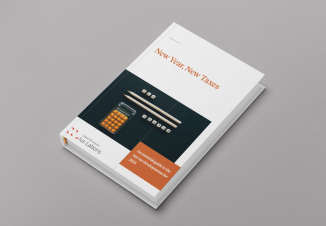
Although definitions vary as to when Generation Z first made its appearance, it seems there are going to be more of them around than Millennials – and very soon.
According to a Bloomberg analysis of United Nations data, which denotes members of Generation Z being born in or after 2000, they will comprise 32 per cent of the global population in 2019. Millennials, on the other hand, will comprise 31.5 per cent.
While little is known so far about their likely impact on the workplace, what is agreed upon is that it is the first generation to be born into the digital age. As a result, so the stereotype goes, these youngsters who have grown up in a 24/7 world, using technology in general and social media in particular, demand instant gratification.
Their attention spans are short, and they are constantly looking for new stimuli, but they also tend to be more entrepreneurial than their Millennial counterparts, with many keen to run their own businesses in future.
Such characteristics would imply that employers may need to look at job design to ensure enough variety is included to keep Generation Z workers engaged and productive. It also suggests the importance of finding ways to harness their energy and drive, balancing their need for support and development with the means of encouraging free-thinking and innovation.
Staff retention may likewise become an increasing issue as this generation is said to be less loyal towards employers and brands and more appreciative of a positive ‘work experience’ based on a peer-to-peer rather than hierarchical approach. This means that employee engagement could well jump even higher up the agenda than it is today.
As David Dodd, consulting director at software and services provider Thomsons Online Benefits, points out: “If we look at the workforce of the future, the hierarchical approach will disappear and be replaced with a flatter structure based on lots of teams working on different projects across the business.”
These teams will inevitably be made up of people from different generations but, “while labelling them in this way may have provided a simple way for employers to segment the workforce in the past, people now want to be treated more as individuals,” he adds.
But even more important, says Jayson Darby, head of psychology at assessment tools consultancy, Thomas International, is the fact that the segmentation approach of the past is ultimately ineffective. According to the firm’s research there is no significant difference in either the behavioural style or emotional intelligence of any of the generations.
Although assigning employees to generational categories may feel convenient, Darby believes “it is far more likely that they are influenced by their direct environment and what stage they are at in their lives.”
“If we look at the workforce of the future, the hierarchical approach will disappear and be replaced with a flatter structure based on lots of teams working on different projects across the business”
Therefore, as members of Generation Z have grown up with technology and are joining the workforce when the cost of living is at its highest, they inevitably “come to the table with a different set of expectations from work,” he says.
However, “this does not mean that as a generation they have distinct, shared personality traits or behaviours. Indeed, our research has shown that the differences between individuals are far greater than the differences between these age-defined groups,” Darby continues.
Duncan Brown, HR consultancy lead at the Institute for Employment Studies, agrees. “Dividing people into generational categories doesn’t really stand up to academic scrutiny, not least because they reflect US demographics rather than the situation elsewhere in the world. Age may be useful as a starting point, but it’s important to look at other areas too such as gender and your own workforce profile.”
This means that to get the most out of either Generation Z, or any other age group, it makes more sense for employers to take a more holistic approach with their engagement and wellbeing strategies and consider what is likely to be of interest to everyone, regardless of age.
Indeed, limiting a development or wellbeing plan to a particular age bracket can even inadvertently result in employers acting in an ageist way, an issue that, while on the corporate agenda, is not generally given as high a priority as either gender or race. In fact, according to Ius Laboris’s forces for change research, a mere 10 per cent of respondents rank ageism as their number one priority.
Put another way, some activities such as pre-retirement preparations, may benefit from being age-specific. But more generally, rather than focus on generational myths and assumptions, it makes more sense for employers to introduce engagement and wellbeing initiatives based on their corporate mission, which are both inclusive and pertinent to all ages.
As Darby concludes: “Employers that continue to believe a generational divide exists will be missing a trick, while companies that recognise employees as individuals, each with their own attributes, values and personalities, and tailor their approach accordingly to this – will thrive.”

